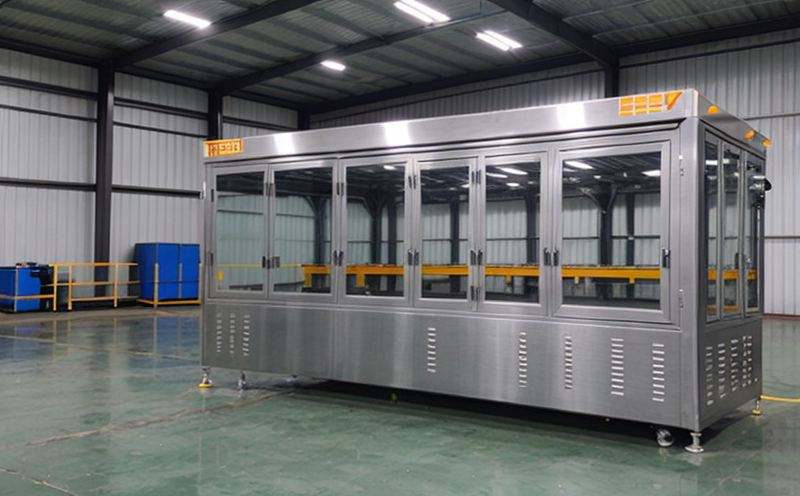ISO 7438-2 Bend Test for Metal Packaging Materials
The ISO 7438-2 bend test is a critical procedure used to evaluate the mechanical properties of metal packaging materials. This test assesses how well the material can withstand bending forces without fracturing or compromising its structural integrity. It is particularly important in the manufacturing and quality control processes for ensuring that metal containers, such as cans or aerosol cans, meet safety standards.
The bend test is essential because it helps identify any weaknesses within the packaging structure, which could lead to leaks or breaches during transportation or storage. This test ensures that the metal used in packaging can withstand the stress of bending without compromising its performance. The results of this test are crucial for maintaining product safety and integrity throughout distribution.
The bend test is often performed using a specific fixture that applies a defined angle of bending to the sample. The specimen must be prepared according to ISO 7438-2 guidelines, which include cutting the material into specified dimensions and ensuring that it meets certain thickness requirements before testing. Once prepared, the sample undergoes the bending process under controlled conditions.
The bend test is not just about identifying a single point of failure; it also provides insights into how the entire structure behaves under stress. This information is invaluable for optimizing packaging design and ensuring that materials meet regulatory standards such as ISO 7438-2, which sets out the specific requirements for this type of testing.
The test results are typically reported in terms of the maximum bending angle achieved before failure or fracture occurs. These values help manufacturers make informed decisions about material selection and design improvements. Understanding these parameters allows them to develop more robust packaging solutions that can better withstand the rigors of transportation and handling.
Applied Standards
| Standard | Description |
|---|---|
| ISO 7438-2 | This standard specifies the procedure for determining the resistance of metal packaging materials to bending. It covers the preparation, testing, and evaluation methods. |
| ASTM D1926 | Although primarily focused on plastic films, this standard offers supplementary guidance that can be cross-referenced for metal packaging. |
Eurolab Advantages
- Comprehensive Testing Capabilities: Eurolab offers a full suite of testing services tailored to the packaging industry, ensuring that clients receive accurate and reliable results.
- Expertise in Metal Packaging: With years of experience in metal packaging testing, our team is well-versed in interpreting ISO 7438-2 requirements and offering actionable insights.
- State-of-the-Art Facilities: Our laboratories are equipped with the latest equipment to ensure precision and consistency in test results.
- Dedicated Client Support: Eurolab’s team of professionals is always available to assist clients, from initial consultation through to final report generation.
Use Cases and Application Examples
- Innovations in Metal Packaging Design: The ISO 7438-2 bend test is used to evaluate new materials or modified designs for metal packaging, ensuring they meet safety and performance standards.
- Routine Quality Control: This test is a standard part of routine quality control checks to ensure that all batches of metal packaging meet the required specifications.
- Compliance Audits: During compliance audits, the bend test result can be crucial in demonstrating adherence to international standards like ISO 7438-2.
- R&D and Prototyping: The test is also used in R&D phases to prototype new metal packaging solutions before full-scale production.





